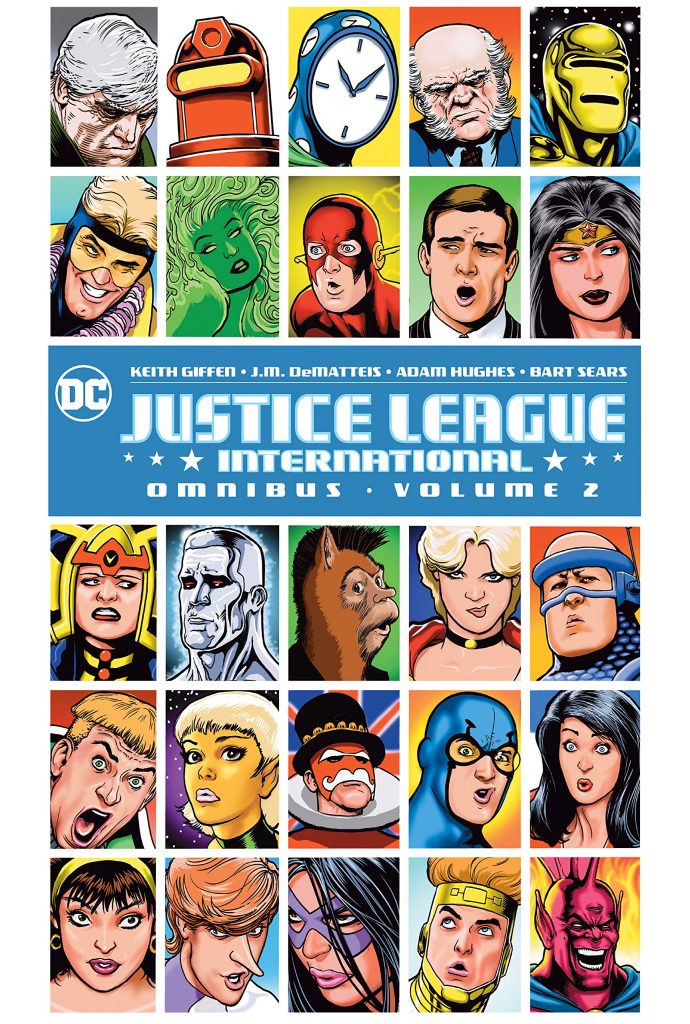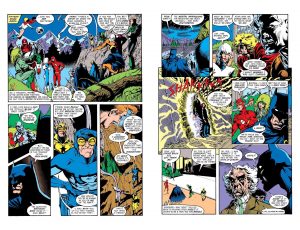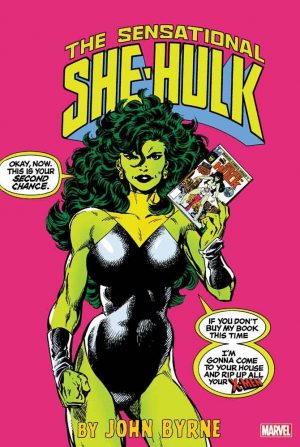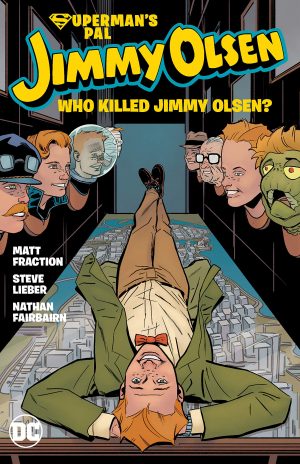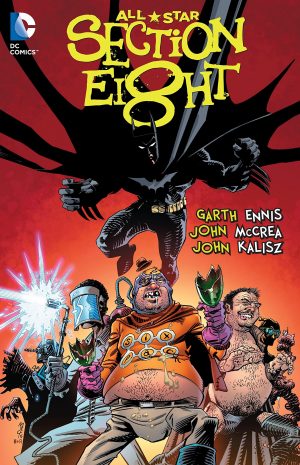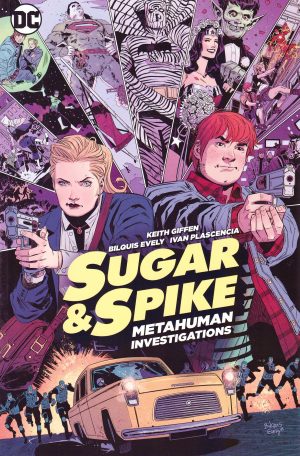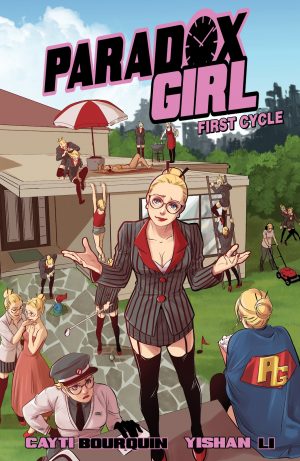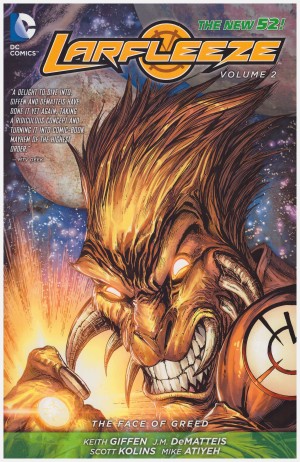Review by Frank Plowright
This is still the Justice League sanctioned by the United Nations split into two teams, one based in the USA, and the other in Paris. Anyone who’s read the first Justice League International Omnibus will find more of the same here as Keith Giffen supplies plots combining action with the ridiculous. Witty dialogue is down to J. M. De Matteis on the US team, and primarily Gerard Jones on the European team, whose adventures are drawn by Bart Sears, with a welcome to newly sourced artist Adam Hughes for the American team (sample spread left). A bonus of this collection is it being the first time this early DC work from a future great has been available in book form. Producing pages to regular deadlines brings him on in leaps and bounds, and while he’s a phenomenal find for the earliest work he’s just a phenomenal artist by his last contributions. Sears (sample right) is a more acquired taste, his women in particular poorly drawn, misproportioned with scowling expressions, and the art looks better on a chapter where he and inker Art Nichols trade roles. Each title also features a primary substitute artist. Linda Medley draws the third largest amount of pages, and she’s not really at home, with awkward people and less imaginative layouts, while Marshall Rogers on the European team is an improvement. Of the artists drawing fewer pages, Mike McKone is promising and Chris Sprouse even better.
What makes this version of the Justice League still very readable is the humour, with even Batman in on the joke. Some aren super confident, invincible heroes, but among them are fallible, self-questioning, insecure types, aware of their limitations and yet doing the right thing anyway. Giffen supplies running jokes such as the Paris-based team unable to speak French, and anyone only ever a step away from some disaster. He also drops the Justice Leaguers into situations new for superhero comics, such as a disgruntled journalist winning daft looking, but super-powerful technology from villains in a card game. Or Blue Beetle and Booster Gold’s scheme to open a Justice League themed tourist resort. Or a British hero based on Basil Fawlty. However, Giffen has the writer’s strength of being able to switch tone, and also presents a desperate battle against Despero, and the European team’s near-fatal encounter with the Extremists, where the jokes are at a premium.
Editorially, too little thought has been put into a collection with a cover price of $125. There isn’t even a title page with the creator credits, which are only found on the individual stories. Because of the way one set of credits runs it means Tom Artis is only noted by his surname. The stories are presented strictly chronologically as originally published, so every chapter of a continued story is interrupted by a chapter of events featuring the other Justice League team. It’s dumb and thoughtless.
Some of these stories are now of their time, but most of almost 1200 pages still provide a high level of enjoyment. However, the art isn’t as consistently good as the first selection, Hughes apart, so this doesn’t rank as highly. The opening chapters were previously issued in paperback as Justice League International Volume 6, but the remainder has never seen book publication.
